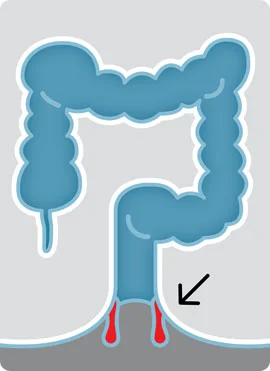Rectal
Prolapse
 What is Rectal Prolapse?
What is Rectal Prolapse?
Rectal prolapse occurs when part of the large intestine’s lowest section, the rectum, slips outside the muscular opening at the end of the digestive tract, the anus. Rectal prolapse may cause discomfort but it’s not often a medical emergency.
Rectal prolapse can sometimes be treated with stool softeners, suppositories and other medications. But surgery is usually needed to treat rectal prolapse.
Symptoms
If you have rectal prolapse, you may notice a reddish mass that comes out of the anus, often while straining during a bowel movement. The mass may slip back inside the anus, or it may remain visible.Other symptoms may include:
- The inability to control bowel movements (fecal incontinence)
- Constipation or diarrhea
- Leaking blood or mucus from the rectum
- Feeling that your rectum isn’t empty after a bowel movement
Causes
The cause for rectal prolapse is unclear. Though it’s a common assumption that rectal prolapse is associated with childbirth, about one-third of women with the condition have never had children.
Risk factors
Certain factors may increase your risk of developing rectal prolapse, including:
- Sex. A majority of people with rectal prolapse are women.
- Age. Rectal prolapse is more common in people over age 50.
